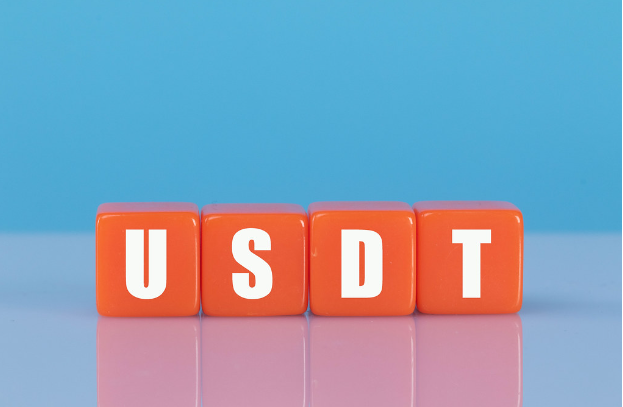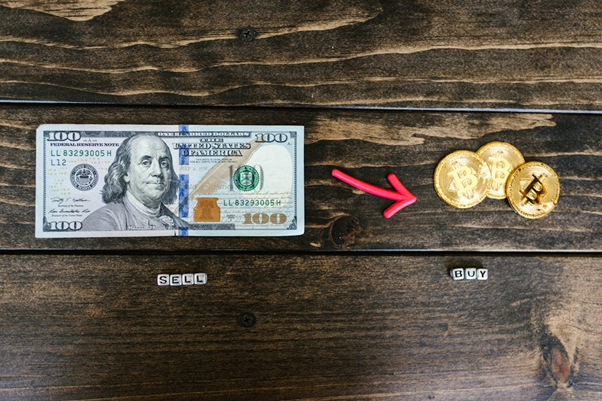What Is Tether? Everything You Need To Know About USDT
Tether (USDT) is a crypto money that is a ‘stablecoin.’ Stablecoins are the digital token value of traditional currencies. By and large, Tether has been built on the back of the US dollar (USD). Theoretically, every USDT token has a dollar equivalent, kept reserved. This attribute makes Tether attractive to traders who can instantly switch between cryptocurrencies and fiat currencies, making trades without any risks in terms of cryptocurrency volatility.
Most cryptocurrency exchanges utilize Tether as an instrument to hold value and conduct trading. USDT is distributed as a coin on different blockchains, such as Ethereum and Tron.
The new USDTs are issued against reserves and are liquidated through Tether at their actual value. USDT is crucial in offering stability and liquidity to cryptocurrency trading activities, functioning as a currency for exchanges and a haven asset.
Understanding Stablecoins
Stablecoins is a cryptocurrency with a primary mission of anchoring its value against an underlying asset or a pool of assets. They do this by linking their value to a non-varying something, like the US dollar, so that the price of their tokens will not change a lot.
Cryptocurrencies like Bitcoin and Tether can transfer any payment anywhere and to anybody. Additionally, stablecoins do not require any investment in the trust certificates of the intermediate institutions to be transferred.
In general, people assert that they will not be able to estimate the value of the money for a week ahead, which is why they keep the safe and their survival means.
People can see the big difference when comparing cryptocurrency volatility with fiat cash, generally stable prices like the US dollar or gold, another asset. Soft values, like cryptocurrencies, can be more vulnerable to fluctuations and sudden divergence on a routine basis. Therefore, stablecoins safeguard the market fluctuations of other cryptocurrencies to minimize the risk.
The Role Of Tether In The Cryptocurrency Market
The first Tether coin was created in early 2015, and it has since become the biggest stablecoin, with nearly 53% of the total stablecoin market capitalization. USD Coin (USDC) is the second largest cryptocurrency worldwide, with a market cap of more than 31%, followed by Binance USD (BUSD).
Crypto traders use stablecoins like Tether to offer stable, reliable liquidity and avoid unpredictable losses from the volatile price of other cryptocurrencies. Tether threads of influence penetrate deep as they subtly change the shapes of the market. Tether plays a more vital role than that silent and invisible protector. Its stability goes far beyond that of a mere symbol, only to direct the market patterns of cryptocurrencies towards some concrete paths.
But due to this consistent value, Tether takes the role of investment for the people to place the shelter whenever the markets are in feral storms. Thus, Tether bridges regular money and cryptocurrency, enabling users to use crypto daily. Investors can sell USDT in Dubai with peace of mind because of the presence of stablecoin reserve alongside other cryptocurrencies.
How Tether Works?
Tether provides shelter for investors to avoid the market storms that come in the form of sudden spikes in cryptocurrency. Tether has the following features to make it work in the cryptocurrency market.
Availability: USDT can be used as an international payment processor without currency conversion.
Transparency: Tether Limited will strive for clarity to ensure there is always a supply update.
Diversification: Although USDT is the first within the line Tether stablecoins, other coins are pegged to other currencies, EURT to the euro, and CNYT to the Chinese yuan.
Stability: USDT mimics the value of the US dollar, where each USDT is backed by a certain amount of leveraged USD money held in reserves.
Fast Transactions: Blockchain empowers quick and convenient transfer of the USDT between users.
Adoption: USDT is one of the most accepted and implemented coins. These are accepted among the various cryptocurrencies in the cryptocurrency industry.
Liquidity: USTD facilitates the trading of cryptocurrencies with lightning speed. Thereby eliminating conversion between dollars and euros.
Tether’s Market Cap And Circulation
Tether is the first to use a stablecoin model simultaneously. It combines the advantages of fiat currencies and blockchain technology. USD/Tether will never trade 1 Tether for less than USD 1; thus, the risk is not a problem. It is also a blockchain; hence, you still gain all its advantages, such as information transparency, innovativeness, and the ability to become a favorite with the public. USDT, therefore, plays the role of “changing the global financial sector” since it features both stable and disrupting elements that no one can predict.
Consequently, the increasing market cap may please investors; It is evidence that the market likes the currency more and more. The cryptocurrency is in 3rd place in the ranking $96,731,298,053 market cap, with the token having a circulating supply of 96,668,335,178 USDT out of the maximum supply of $99,600,626,149. Tether maximum supply corresponds to 100% of the total token produced.
Legal And Regulatory Challenges
The New York Attorney General investigated Tether and Bitfinex, the related exchange, over the charges of mixing funds and the questionable degree of backing. This legal examination provided Tether with a significant turning point in their history.
On top of that, Tether has been facing a series of court cases that have questioned its access to funding and ability to stay operational. Due to the regulatory pressure, Tether had to introduce additional compliance measures when hiring new employees to strengthen the risk management and anti-money laundering procedures. Nevertheless, these expenses are quite high, with Tether paying millions for its legal fees and penalties.
Moreover, in Dubai, UAE, VARA largely addresses stablecoins; Swartz noted that it only does so in the guidance for companies rather than in the rulebook for issuing tokens. In the bodies’ rulebook, VARA sets a liquid asset reserve ratio for the companies including the virtual asset linked to the value of sovereign currencies.
The bylaw states that, regardless of the nature of the Fiat-referenced virtual asset event, there must be cash or cash equivalent reserves denominated in the fiat currency referenced of not less than the market value of the cited Fiat-referenced virtual asset in public circulation or not yet redeemed.
Conclusion:
Tether is a digital currency that tries to tie its value with global fiat money, such as the dollar or euro. It realizes this by keeping a substantial fiat currency in its reserves so that cryptocurrency stays the same as the fiat currency.
As a stablecoin, Tether (USDT) has a monetary system based on a 1-to-1 reserve of fiat currency, usually the US dollar, with Tether Limited holding the reserve.
The crypto market faces a similar problem of scrutiny by the regulators, with stablecoins being Tether’s main and specific problem. However, the industry does not give up complying with regulations; it maintains transparency for long-term sustainability.
In the final analysis, Tether shouldn’t be made to look like it is a trivial or unsubstantial thing among so many cryptocurrencies, as Tether and other stablecoins are here to lessen the market uncertainty of other cryptocurrencies.



